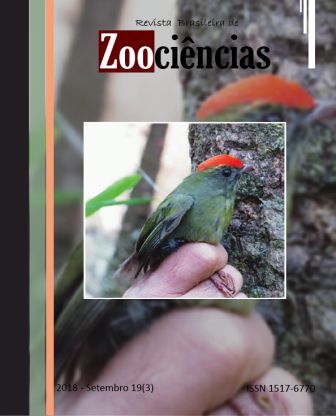Effect of ants on Mus musculus Linnaeus, 1758 (Rodentia: Muridae) carcasses decomposition: a preliminary study in the in an Atlantic Forest fragment
DOI:
https://doi.org/10.34019/2596-3325.2018.v19.24746Resumo
Different ant species are frequently associated with carcasses during decomposition and they are present from the early until the late postmortem phase. Despite the common presence of Formicidae on carcasses, their role in the decomposition process is generally neglected. Here, we evaluate the effect of ants on Mus musculus decomposition pattern and abundance of associated dipteran fauna in the Neotropical region. We also discussed the role of different ant species in the decomposition process, emphasizing their predatory or necrophagous behaviour. Six carcasses of M. musculus were placed in the field and distributed equally in two treatments: “with ants” and “without ants”. Only in the “without ants” treatment, ants were not allowed to access the carcasses. A total of six ant species were registered on carcasses. The most abundant ant species were Linepithema neotropicum and Pheidole sp., which exhibited an intense predatory behaviour on dipteran larvae, resulting in a delay in the decomposition process. In contrast, Camponotus rufipes workers were observed acting exclusively as necrophagous and their behaviour clearly accelerated the decomposition process on one carcass. Considering the entire decomposition process, the average abundance of adult flies was not different between the two treatments. However, we found a significant difference in the abundance of dipteran larvae between them. Our findings provide a preliminary study about the effect of Neotropical ant species presence on the decomposition pattern. We highlight the contradictory role that different ant species may exhibit on carcasses and how these presented findings could be applied in medico legal reports.



